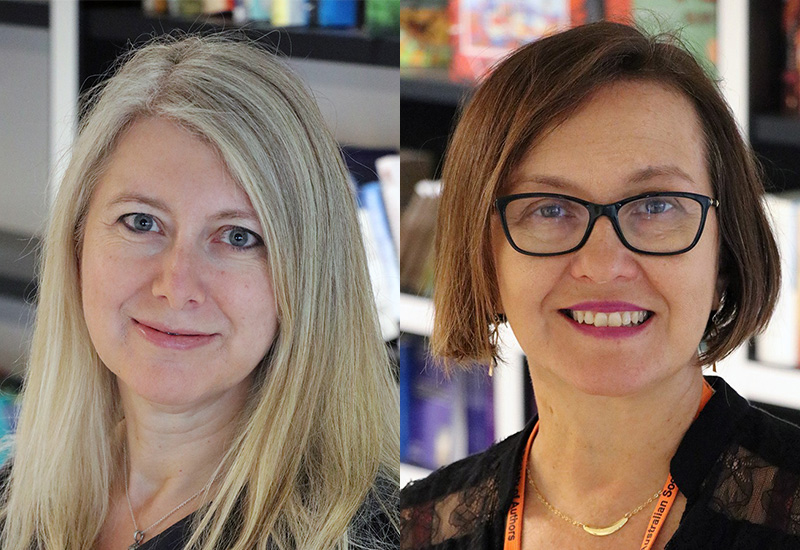By Paul Anderson
Virginia Morrison and Rosanna Arciuli of the Copyright Agency were guest co-presenters at an online presentation hosted by EdNSW on 7 June 2022. Virginia is a senior lawyer and Rosanna is the main point of contact for publishers and industry stakeholders at the Copyright Agency.
The Copyright Agency
The Copyright Agency (CA) is a not-for-profit member organisation that represents the content creation industry, with more than 40,000 members comprising authors, poets, playwrights, journalists, publishers, visual artists, photographers, cartoonists, illustrators and surveyors. CA was appointed in 1990 to manage the statutory, education and government licences that are enshrined in the Copyright Act. Its purpose is to support the creation of Australian content by making it easy for users to access copyrighted materials on fair terms. CA negotiates licence fees with copyright users, then collects and distributes these royalties to its members for the reuse of their words and images.
Copyright basics
Copyright:
- is the right to copy, and other exclusive rights
- is an automatic form of intellectual property protection
- protects expression, not ideas or information
- provides economic incentive for creation and investment
- belongs to an author/artist/publisher, and so on, and can be bought, sold, bequeathed or licensed
- is limited in time, so not absolute – generally life plus 70 years.
Principles of copyright law
Virginia presented a comprehensive set of topics that included:
- copyright protected works: Literary, artistic, dramatic and musical works; published editions; sound recordings, films and broadcasts
- copyright rights: Reproduction, communication to the public, performance in public, publication and adaptation
- copyright ownership: The general rule is the creator is the first owner. Employee creators and commissioned creators are potential exceptions. Educational institutions are covered by licences, but generally, exceptions are limited.
- copyright infringement: This occurs when no exception applies and involves the use of the whole or a “substantial part” of a work. A “substantial part” means an important, distinctive or recognisable part – there is no defined percentage or proportion. Blanket licences that cover common uses are one way to avoid copyright infringement.
- fair dealing: Copyright owners’ permission is not required for “fair dealing”. It is limited, however, and involves use for specific purposes: research or study, criticism or review, reporting the news, and parody or satire.
Moral rights, copyright clearances and examples of free licences were also discussed.
Tips for using words and images
Virginia used photos in her presentation, and a case study involving Rudyard Kipling’s poem If, to demonstrate the correct use and acknowledgement of material subject to copyright. She gave two general perspectives on working with such material and tips for both.
Copyright material you create
- Who owns it? It is always good to clarify, potentially in the contract, who owns the copyright, and who gets a licence to use it.
- Is creation and ownership adequately documented and protected?
- Use the copyright notice (©).
- How can trainees or the audience use your material?
Copyright material you use
- Is it protected by copyright?
- Do you have permission from the copyright owner? Individuals and freelancers cannot rely on exceptions.
- Ask for permission, get a licence and attribute.
- Use it with integrity: in no way prejudicial to the creator.
Creative Commons is a licensing model designed to extend free licences for the use of copyright material, provided you attribute. Alternatively, you could go to a commercial provider and buy access to stock images.
Virginia’s presentation exemplified best practice:
- It was clear that CA owns the presentation.
- Permission had been granted for the presentation to be recorded and subsequently viewed: A type of copyright licence.
- The graphics used to create the slides were Microsoft Office stock art covered under built-in software licence.
- The photos used (generally of CA members) were all captioned with an image credit and a photographer credit. CA has specific permissions in place to use these photos, or it is copyright material that they created. The photos were drawn from stock images held by the CA for presentations and used to promote their work.
- There was one exception, and it was deliberate. A photo of Albert Einstein was used, sourced from the internet. Einstein died in 1955. In Australia all photographs that were taken prior to 1955 are out of copyright because of the law that applied at that time. Effectively every photograph of Einstein is now out of copyright in Australia.
A recording of the presentation will be available to purchase via the IPEd events page (or free if you paid to attend).
* IPEd has acquired an educational copyright licence from the Copyright Agency. For more information, read the announcement in this month’s Gatherings.

